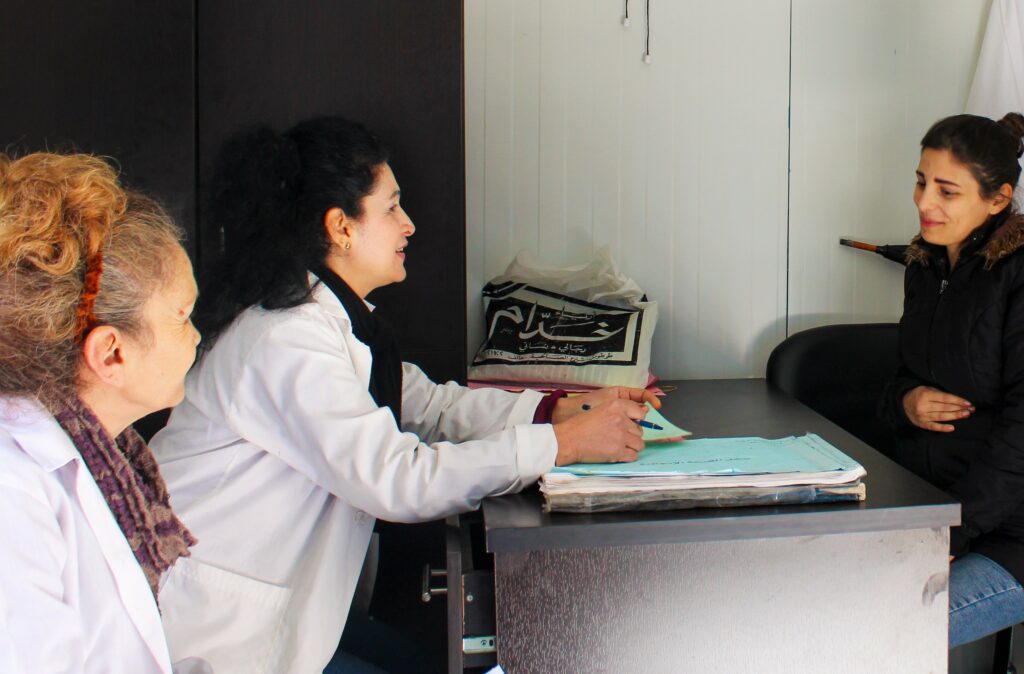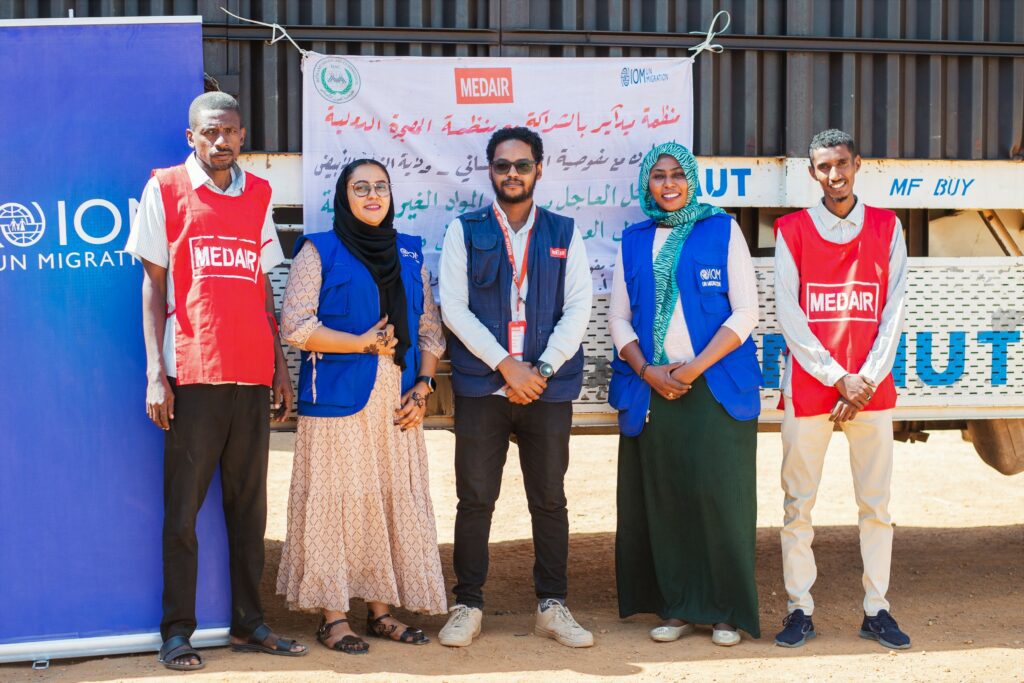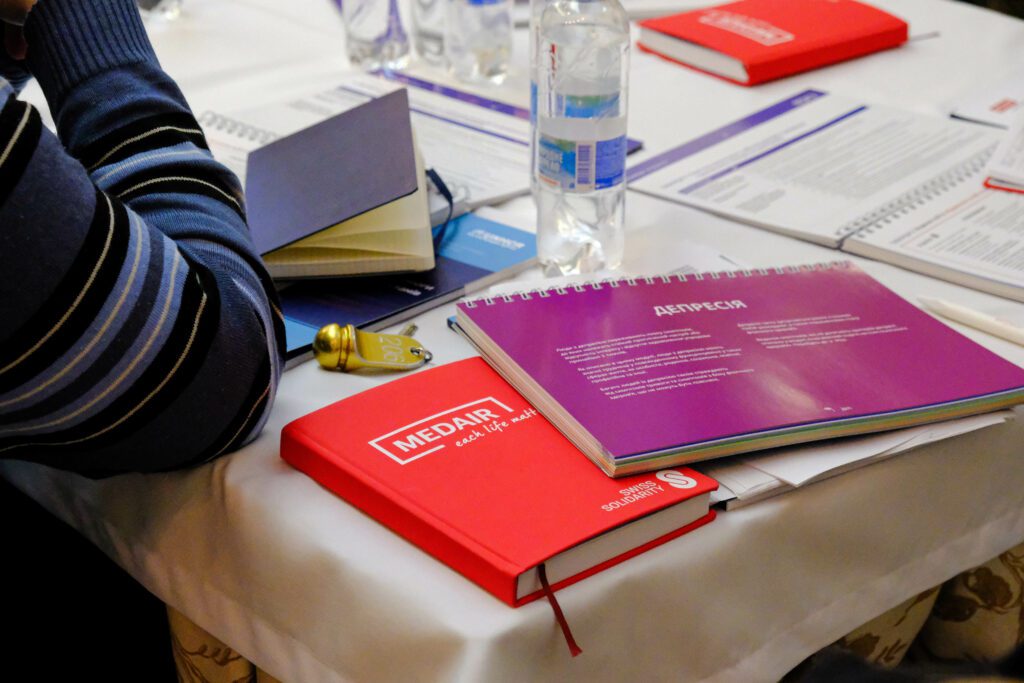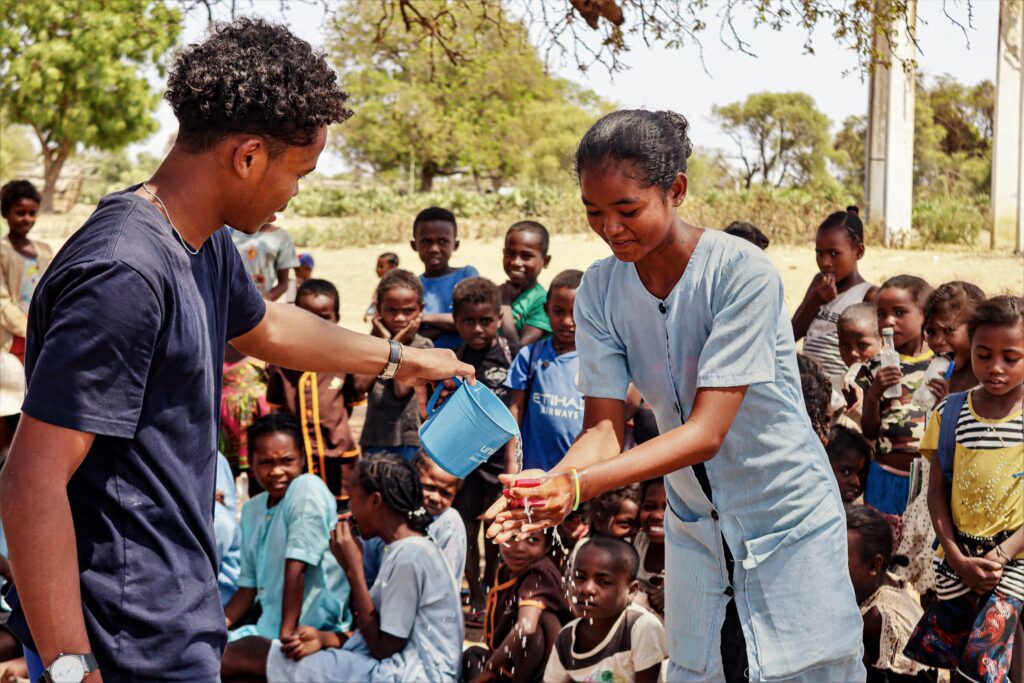Defying the Force of Nature: Rehabilitating Cyclone Shelters in Madagascar
2'
Having a baby can be a stressful event in the life of any woman.
Having a baby can be a stressful event in the life of any woman. Worrying when it will happen, if the baby will be healthy, and how much pain it will cause are typical concerns most women can relate to. Having a baby in the midst of a cyclone? Now that is another story.
On 7 March 2017 at 11:00 am, Jolita, 26, gave birth to a healthy baby girl named Tania in one of Medair’s cyclone shelters in Madagascar during Cyclone Enawo, which struck the northeast coast of Madagascar that day with Category 4 force.
“My water broke the day before. We knew we couldn’t stay in our house – warnings about Cyclone Enawo were going out. I was very anxious. I wanted to be in a safe place for my very first delivery, especially if it was going to happen during a cyclone! We knew the cyclone shelter was our best option.”
Jolita is one of 200 people in the village of Ambinanitelo who found refuge in one of Medair’s cyclone shelters when Cyclone Enawo hit. The following days, heavy rains caused destructive floods, leaving her village under three metres of water.
Right after Cyclone Enawo’s passage, Medair travelled to the devastated areas to assess the needs of the people affected, and to distribute emergency water and sanitation kits and disinfect contaminated wells. Alfred Ralaimboa, 40, was part of a Medair team that went to Jolita’s village. “When we arrived, Jolita’s cyclone shelter was completely full,” Alfred remembers. “In other villages, people were so desperate to find refuge that the number of people in the shelter far exceeded the recommended capacity. In one village, 380 people stayed in the cyclone shelter!”
People told the Medair teams that many lives had been saved because of the shelters, which Medair had built between 2011 and 2013. Alfred had supervised the construction of seven of those shelters. He felt real joy and pride when he saw that the shelters had played such a crucial role in keeping so many people safe.
“Although the district of Maroantsetra is often hit by cyclones, flooding is what makes this area particularly vulnerable,” he explains. “When a cyclone hits, the heavy rains are trapped in this basin and the whole area quickly floods. This region is the wettest in Madagascar – 3,000 ml of rain a year!”
The Medair shelters are five years old now. The communities have tried to maintain them, but many need to be rehabilitated. “We want to avoid an accident the next time the communities use the shelters,” says Alfred. “Rotten wood needs to be changed and foundations need to be reinforced. The doors must be repaired and the locks changed. In several, the latrines and water reservoirs need to be repaired.”
By the next cyclone season in November 2017, Medair will rehabilitate 11 shelters. Alfred is supervising the rehabilitation work of four of them, including the one in Jolita’s village. He hopes the next cyclone season will be mild, but should another major cyclone hit the area, he knows people will be safe in the newly rehabilitated cyclone shelters.
CHECK OUR LATEST STORIES
Featured StoriesStoriesSyriaHealth and Nutrition
A new life for a clinic in Syria
"The clinic is ready!" The news was music to Dr Eyad's,(the director of Tal Salhab clinic), ears. Medair had just completed the rehabilitation of Tal Salhab's only primary health centre, providing it with much-needed medical equipment – offering a lifeline to over...
StoriesSudanWater, Sanitation and Hygiene (WASH)
The Sudan crisis: how Medair is stepping in
Sudan crisis: how Medair is stepping in Twelve months into the armed conflict in Sudan, it has become the largest displacement crisis in the world. To date, 8.4 million people have been forced to flee their homes, and the number is growing every day. Families have...
StoriesUkraineHealth and NutritionMental Health
The Need for mental health support in Ukraine
“I really enjoyed the organization of these trainings. I’ve already gained a lot of interesting knowledge, which, it seems, I was already familiar with, but had never thought about it deeply. Learning new things, I understand how I can apply them in my work to...
StoriesMadagascarWater, Sanitation and Hygiene (WASH)
Medair’s innovative response to drought
In southern Madagascar, Medair aims to play a key role in improving access to water, sanitation, and hygiene for vulnerable communities affected by drought and 'kere' (famine). Normally, people living in remote villages in southern Madagascar need to walk 10 to 40...
StoriesUkraineShelter and Infrastructure
Surviving Adversity
“Sometime around 6 a.m., my nephew called me and said, ‘Are you still sleeping? THE conflict has started.’ I shouted at my children to turn on the television to watch the news. I never thought I would experience something like this at my age. It was a terrifying...
StoriesJordanHealth and Nutrition
Health Improvement Journey
"We lost everything, our home and farm, therefore I left everything behind me. I carry hope to have a better place for me and for my family," Fozeh said, her voice heavy with the weight of displacement but her spirit resilient with the promise of a brighter future....
StoriesMadagascarWater, Sanitation and Hygiene (WASH)Women & Children
Fetching water, a burden for women
In the struggle of finding clean water, women bear the heaviest load "In addition to my duties as a single mother, I have to fetch water three hours away every day," shares Farasoa, a 38-year-old divorcee raising seven children in the Fokontany of Ambory...
StoriesYemenHealth and Nutrition
From a shack to a health unit
Following nearly a decade of conflict in Yemen, the country has experienced a partial collapse of an already fragile public infrastructure, leaving approximately 66 percent of the population in dire need of humanitarian assistance. Yemen’s healthcare system has...





